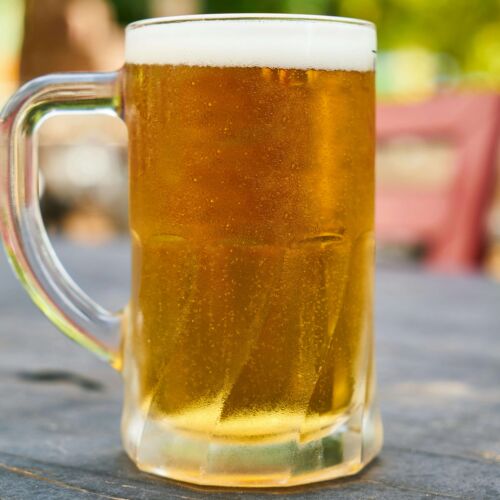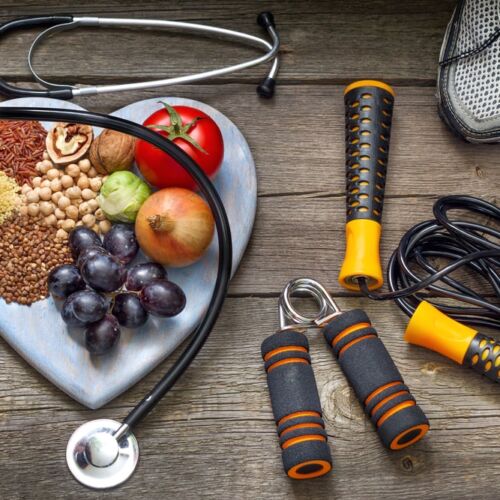Fueling the Multi-Sport High School Athlete: A Quick Reference Guide
by Joanna Cummings MS, RD-AP, CNSC, CSSD

Multi-sport high school athletes face unique nutritional challenges. Between morning practices, afternoon games, weekend tournaments, club practice and travel, as well as still growing, these dedicated student-athletes need a strategic approach to fueling their bodies for peak performance across different sports and seasons.
The Demands
Multi-sport athletes require more calories and nutrients than their single-sport or non-athlete peers. For example, a basketball player who transitions to track in the spring is not just maintaining one type of fitness—they are adapting their body to meet different athletic demands. This requires careful attention to nutrition timing, portions, and food choices.
Core Nutritional Principles
Energy Requirements
* Base needs: 2,500-3,500 calories daily for most high school athletes; some can
easily exceed 4,000 calories a day
* Consider adding 500-1,000 calories during multiple-practice days
* Monitor weight and energy levels to adjust accordingly
Macronutrient Balance
Think of carbohydrates as your “gasoline” or “battery”. It is carbohydrates that “fill your tank” or “top off your battery” and allow these athletes to perform their best in practice and in their games. ATHLETES NEED CARBOHYDRATES!
* Carbohydrates: 55-65% of total calories
* Focus on whole grains, fruits, and vegetables
* Essential for maintaining glycogen stores across multiple practices
* Protein: 20-30% of total calories
* Aim for 1.4-1.8g per kg of body weight
* Critical for muscle recovery between different sports
* Healthy Fats: 20-30% of total calories
* Include sources like avocados, nuts, and olive oil
* Important for hormone production and inflammation control
Daily Meal Planning
Breakfast (Within 1 hour of waking)
* Oatmeal with banana and peanut butter
* Greek yogurt with berries and granola
* Whole grain toast with eggs and avocado
Lunch (At least 2 hours before practice)
* Turkey and cheese sandwich on whole grain bread
* Quinoa bowl with chicken and vegetables
* Rice and beans with lean protein
Pre-Practice Snack (1 hour to 30 minutes before)
* Apple or applesauce
* White bread with jelly
* Crackers with hummus
* Carbohydrate containing sports drink
Post-Practice Recovery (Within 30 minutes for females; 1 hour for males)
* Chocolate milk
* Protein smoothie with banana
* Greek yogurt with granola
* Family dinner if going home directly after practice
Dinner (Within 2 hours after practice)
* Lean protein (chicken, fish, or lean beef)
* Complex carbohydrates (sweet potato, brown rice)
* Colorful vegetables
* Healthy fats (olive oil, avocado)
Sleep and Recovery
Quality sleep is arguably the most powerful recovery tool available to multi-sport athletes. While nutrition and training get most of the attention, sleep is where the magic of athletic development truly happens. High school athletes need 8-10 hours of quality sleep per night—more than their non-athlete peers. During deep sleep, the body releases growth hormone, repairs damaged tissues, consolidates motor learning, and replenishes energy stores. Chronic sleep deprivation can lead to decreased reaction times, reduced endurance, compromised decision-making, and increased injury risk.
Multi-sport athletes, who often transition between different movement patterns and skill sets, particularly need this recovery time to allow their bodies to adapt to varying athletic demands. Create a consistent sleep schedule by going to bed and waking up at the same time daily, even on weekends. Establish a relaxing bedtime routine, avoid screens for an hour before bed, and keep your bedroom cool, dark, and quiet. Remember: sacrificing sleep to fit in extra practice or homework ultimately undermines athletic performance and academic success.
Special Considerations
Hydration
* Start each day with 16-20 oz of water
* Drink 16-20 oz 2-3 hours before practice
* During activity: 4-6 oz every 15-20 minutes
* Post-practice: 16-20 oz of water with meals; if you are an athlete who sweats
heavily, consider taking you weight before and after practice and drink 16-24 oz
for every pound lost during practice
Cross-Season Transitions
* Encourage the student athlete to rest and enjoy the break between sports (if possible)
* Increase energy when transitioning to more endurance/demanding sports
* Adjust protein intake based on strength training regimen (hypertrophy)
* Monitor energy levels during first two weeks of new season – signs of underfueling
include inability to regulate temperature, recovery takes longer than usual, poor
appetite, and more…
Tournament and Game Days
* Start hydrating 48 hours before
* Pack portable, easily digestible snacks
* Focus on eating carbohydrates between games; after the games focus on eating a well-balanced meal with protein.
* Recovery nutrition becomes crucial for multi-game days
Common Pitfalls to Avoid
- Skipping meals due to busy schedules
- Under-fueling during school hours
- Poor hydration between practices
- Inadequate recovery nutrition between different sports
- Relying too heavily on processed foods and supplements
Working with Families and Coaches
* Communicate nutritional needs to family members
* Discuss importance of meal and snack timing with coaches and teachers
* Plan ahead for team travel days
* Consider working with a professional Registered Dietitian who is Board Certified in Sports Dietetics (RD, CSSD) to dial in your nutrition to meet the specific needs of the athlete.
Successfully fuelling a multi-sport athletic career in high school requires planning, dedication, and awareness. By following these guidelines and adjusting them to individual needs, athletes can maintain high performance levels across different sportswhile supporting their growing bodies and academic demands.
Remember: proper nutrition is not just about today’s performance—it’s about sustaining a healthy, active lifestyle throughout the high school years and beyond. Listen to your body, make adjustments as needed, and seek out professional guidance to help you achieve your goals!
About the Author: Joanna Cummings, MS, RD-AP, CNSC, CSSD work with all ages with a focus on sports, weight loss, chronic disease, and women in perimenopause. Joanna is Located in Parker, Colorado.
Images: From Unsplash and Pexels
The Site is not intended to be a substitute for professional advice. Under no circumstances will we be liable for any loss or damage caused by your reliance on information obtained through the Site. You are responsible for evaluating the accuracy, completeness, or usefulness of any information, opinion, advice, or other content available through the Site. Please seek the advice of professionals, as appropriate, regarding the evaluation of any specific information, opinion, advice, or other content. Never disregard professional advice, including medical advice, or delay in seeking it because of something you have read on this Site.



